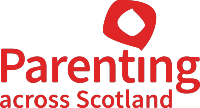'Easy Read'
Making sure information is available to all parents and carers
The PAS 'Starting primary school' top tips booklet is popular with teachers and parents. But when we tested it with parents, we realised that we also needed to produce an 'Easy Read' version.
Under UK law, public sector organisations have specific requirements to provide accessible information for disabled people: The Disability Discrimination Act (1995) says 'all service providers must make reasonable adjustments to ensure disabled people can access services'.
The Easy Read format helps people with learning disabilities understand information easily. People with learning disabilities need to be able to read a range of information, not just disability-specific information.
Easy Read uses pictures to support the meaning of text. It can be used by a carer to talk through a communication with someone with learning difficulties so that they can understand it, for example, a letter from the council about council tax charges.
Easy Read is often also preferred by readers without learning disabilities, as it gives the essential information on a topic without a lot of background information. It can be especially helpful for people who are not fluent in English.
There is good information about how to produce information in Easy Read. it has different variations and it is important to develop it in consultation with the end reader. It can be time-consuming to produce.
We referred to guidance from People First, Mencap and the Scottish Consortium for Learning Disability but there is other guidance available.
We took each of the top tips in our booklet and found the simplest way possible to explain each.
We could not find just what we needed from the standard library of easy read pictures so we asked our graphic designer to produce these for us.
From our experience, these are our 'top tips' for producing easy read materials:
1. Research other information produced in an easy read format, for example NHS Health Scotland:
- My Pregnancy, My Choice - a guide to pregnancy in pictures and easy words
- You and Your Baby 0-1 - a guide to looking after babies in pictures and easy words
- You and Your Little Child 1-5 - a guide for parents in pictures and easy words
2. Follow the guidance:
- Large typeface at least 16 point size
- Page layout: information should flow from left to right
- Use plain English but do not use childish words
- Avoid jargon or abbreviations
- Use clear images that describe the information
- Be careful with background colour
3. Test it with the target audience
The most important part was testing the booklet with parents with learning disabilities. We got very useful feedback from parents and also the practitioners supporting them. We incorporated this into the final version.
4. Keep improving
We are always looking to improve the materials that we produce. We printed 500 copies of the booklet in October 2012, and distributed most of them through schools and family support services.
